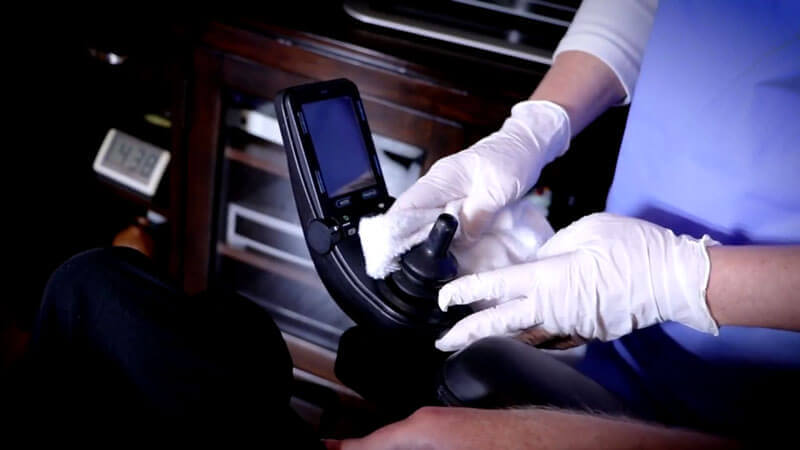Proper cleaning and disinfection of a wheelchair is essential to extend its life and keep it looking new for longer. But it's also essential to prevent the spread of bacteria and viruses such as COVID-19.
Due to the easy transmission of this virus, the World Health Organization (WHO) has given some essential recommendations to prevent its transmission, including social distancing, frequent hand-washing, and intensive cleaning of the surfaces and products that we use regularly. As we are now beginning to spend more time outdoors, it is even more important to keep wheelchairs clean and properly disinfected.
Today we want to share some guidelines and tips to help you disinfect your wheelchair on a daily basis and thus prevent the transmission of the virus.
Cleaning vs. Disinfection
The first thing to remember is that cleaning is not the same as disinfecting. By cleaning, we remove germs and dirt from surfaces, but we do not kill germs. Removing them only decreases the number of germs and lowers the risk of spreading infections.
On the other hand, by disinfecting a wheelchair, we kill microorganisms like bacteria by using chemical products. This process does not necessarily clean dirty surfaces. Killing germs on the surface after cleaning has been done can further prevent the spread of infectious diseases.
With this in mind, you need to conduct a regular cleaning of your wheelchair and disinfect it using a special sanitizer for surfaces. Please carefully read the sanitizer manufacturer's instructions for proper use and disinfection.
Tips for cleaning your wheelchair:
- It is important to clean your wheelchair every time you visit a public place, such as a supermarket.
- All contact surfaces must be treated with a disinfectant solution. Disinfect with wipes that contain at least a 70% alcohol solution, or other approved store-bought solutions for disinfecting surfaces. The sanitizer must remain on the surface for at least 15 minutes. The surface should then be cleaned with a wipe and rinsed with an aseptic cloth.
- The joystick on a power wheelchair can be cleaned with a damp cloth and a diluted sanitizer.
- Ensure all surfaces are rinsed with clean water and dried thoroughly after disinfection. Remember if your wheelchair is not properly dried, it can cause damage. It is always better to clean any component of your chair with a slightly damp cloth, not fully wet.
- Do not use solvents, bleaches, abrasives, synthetic detergents, wax enamels, or sprays.
- Have a look at the instructions provided with the wheelchair for more information about cleaning the controls.
- Don't forget to disinfect the armrests, handles, and other components that are frequently touched by users and caregivers.
Critical components of a wheelchair
Although it is recommended to carry out a complete cleaning of the entire frame after visiting any public place; there are some accessories and components such as the cushion, the armrests, or the handrims to which you should pay special care, as they are frequently exposed to viral contamination.
Front and rear wheels: The wheels of your wheelchair are in direct contact with the ground and come in contact with all kinds of germs as a result. Even if a daily disinfection is not carried out, it is recommended to perform a cleaning routine every time you return home. Ensure the disinfectant is safe for use on your chair before application. Never hose off your power wheelchair or place it in direct contact with water.
Handles: The handles are one of the main sources of infection in a wheelchair since they are often in contact with many hands, thus facilitating the transmission of the virus. For this reason, it is necessary to clean them with a sanitizer.
Armrests: The armrest is also a frequent contact component that should be disinfected with a surface sanitizer if possible.

Joystick and handrims: When cleaning a wheelchair, we can't forget to disinfect the joystick for power wheelchairs and handrims for manual wheelchairs. These two elements are in full contact with our hands and can concentrate a large number of germs.
Cushion: Both the seat cushion and the back rest are in full contact with the body. Rubbing and sweating can contribute to the accumulation and spread of bacteria. If possible, disinfect it with a sanitizer, leave it for about 15 minutes, and dry with a disposable paper or cloth.
If you use other types of support products such as crutches or canes, you can follow the same recommendations and disinfect the areas that are frequently touched, especially when using them in public places.
Most of the stories here on LiveQuickie.com were submitted by readers. Do you have a story to tell? We'd love to hear it. Submit your story here.